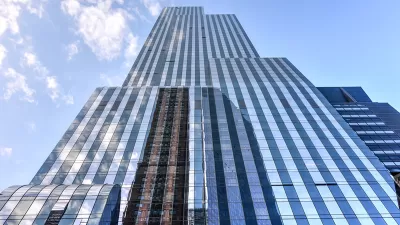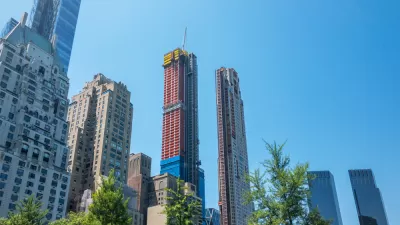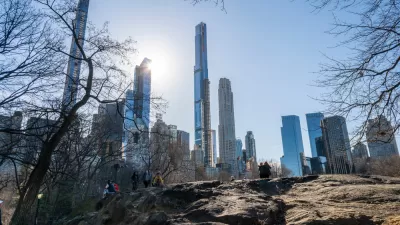Mechanical voids or stilts—whatever you call the trick of architecture that has been pressing the residential skyline in New York ever higher, the city is ready to regulate.

"The city is on schedule to regulate so-called excessive mechanical voids by the end of the year, dealing a blow to developers who use a quirk in the building code to boost the height of their luxury apartment towers," reports Joe Anuta.
Mechanical voids are also known as stilts, as mentioned in the headline to illuminate the concept. Still, here is a more technical description:
Mechanical voids are essentially floors used to house the heavy equipment that powers a building's systems. However, by raising the ceilings of these spaces to dizzying heights, developers increasingly have been creating hollow pedestals upon which they can stack luxury apartments.
These luxury apartments sell at higher prices so that makes developers happy, but neighborhood groups have caught onto the embellishment.
The city has been studying the void and stilts issue since January.
FULL STORY: City to regulate stilts loophole by end of year

Planetizen Federal Action Tracker
A weekly monitor of how Trump’s orders and actions are impacting planners and planning in America.

San Francisco's School District Spent $105M To Build Affordable Housing for Teachers — And That's Just the Beginning
SFUSD joins a growing list of school districts using their land holdings to address housing affordability challenges faced by their own employees.

The Tiny, Adorable $7,000 Car Turning Japan Onto EVs
The single seat Mibot charges from a regular plug as quickly as an iPad, and is about half the price of an average EV.

Seattle's Plan for Adopting Driverless Cars
Equity, safety, accessibility and affordability are front of mind as the city prepares for robotaxis and other autonomous vehicles.

As Trump Phases Out FEMA, Is It Time to Flee the Floodplains?
With less federal funding available for disaster relief efforts, the need to relocate at-risk communities is more urgent than ever.

With Protected Lanes, 460% More People Commute by Bike
For those needing more ammo, more data proving what we already knew is here.
Urban Design for Planners 1: Software Tools
This six-course series explores essential urban design concepts using open source software and equips planners with the tools they need to participate fully in the urban design process.
Planning for Universal Design
Learn the tools for implementing Universal Design in planning regulations.
Smith Gee Studio
City of Charlotte
City of Camden Redevelopment Agency
City of Astoria
Transportation Research & Education Center (TREC) at Portland State University
US High Speed Rail Association
City of Camden Redevelopment Agency
Municipality of Princeton (NJ)





























